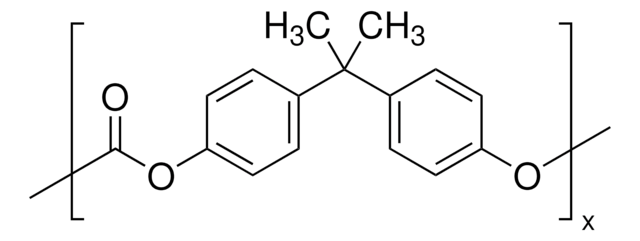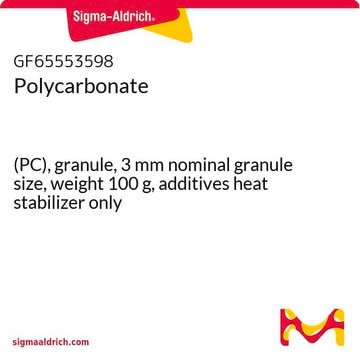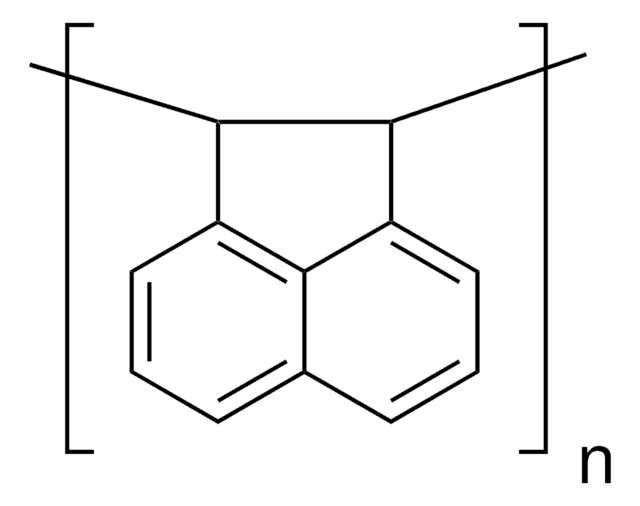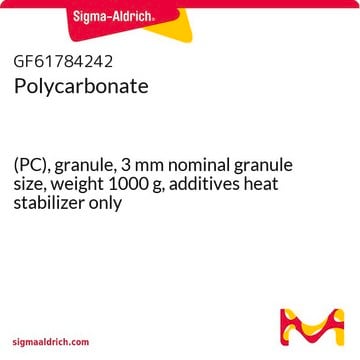181676
Poly(Bisphenol A carbonate)
analytical standard, molecular weight series
About This Item
Polecane produkty
klasa czystości
analytical standard, molecular weight series
Poziom jakości
masa cząsteczkowa
average Mn 12,000-23,000 (typical)
average Mw 22,000-40,000 (typical)
metody
gel permeation chromatography (GPC): suitable
gęstość
1.2 g/mL at 25 °C (lit.)
format
neat
ciąg SMILES
CC(C)(c1ccc(O)cc1)c2ccc(O)cc2
InChI
1S/C15H16O2.CH2O3/c1-15(2,11-3-7-13(16)8-4-11)12-5-9-14(17)10-6-12;2-1(3)4/h3-10,16-17H,1-2H3;(H2,2,3,4)
Klucz InChI
XSXWYGABGYBZRM-UHFFFAOYSA-N
informacje o genach
mouse ... Esr1(13982)
rat ... Ar(24208)
Szukasz podobnych produktów? Odwiedź Przewodnik dotyczący porównywania produktów
Powiązane kategorie
Opis ogólny
Zastosowanie
Komentarz do analizy
Tylko elementy zestawu
- average Mw 23,000; average Mn 13,000 25 g
- average Mw 40,000; average Mn 21,000 25 g
- average Mw 31,000; average Mn 18,000 25 g
Kod klasy składowania
11 - Combustible Solids
Klasa zagrożenia wodnego (WGK)
WGK 3
Temperatura zapłonu (°F)
Not applicable
Temperatura zapłonu (°C)
Not applicable
Środki ochrony indywidualnej
Eyeshields, Gloves, type N95 (US)
Choose from one of the most recent versions:
Masz już ten produkt?
Dokumenty związane z niedawno zakupionymi produktami zostały zamieszczone w Bibliotece dokumentów.
Klienci oglądali również te produkty
Nasz zespół naukowców ma doświadczenie we wszystkich obszarach badań, w tym w naukach przyrodniczych, materiałoznawstwie, syntezie chemicznej, chromatografii, analityce i wielu innych dziedzinach.
Skontaktuj się z zespołem ds. pomocy technicznej







